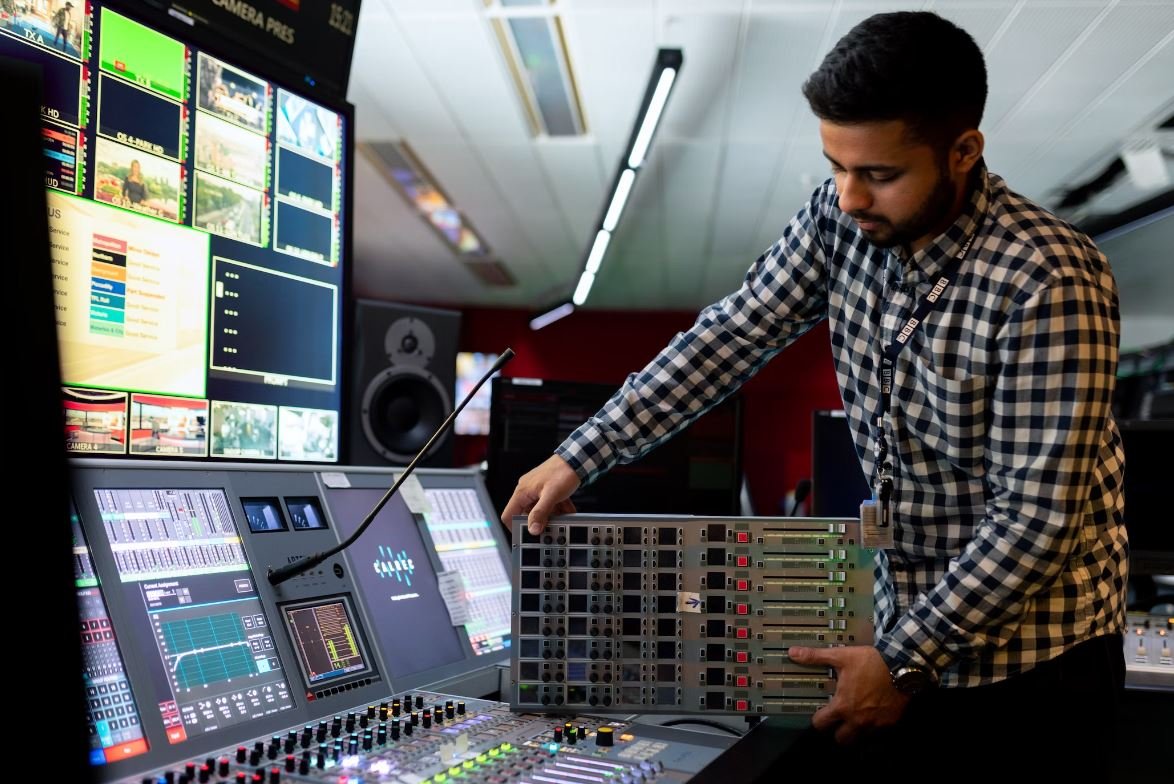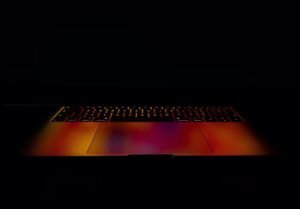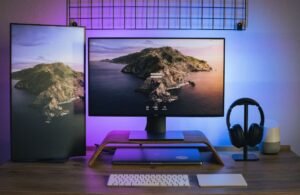What Film Camera Should I Buy?
Are you considering delving into the world of film photography? The charm and nostalgia associated with capturing images on film can be quite fulfilling. However, with the plethora of film cameras available today, choosing the right one can be overwhelming. This article aims to guide you through the process of selecting a film camera that suits your needs and preferences.
Key Takeaways
- Consider your experience level and budget before selecting a film camera.
- Decide if you want a manual or autofocus camera.
- Research the different types of film formats and their advantages.
- Consider the availability and cost of film and processing.
- Look for additional features that enhance your photography experience.
Experience Level and Budget
When choosing a film camera, it’s important to consider your experience level as well as your budget. If you’re a beginner or on a tight budget, opt for a simpler and more affordable camera. *An entry-level camera allows you to learn the basics of film photography without breaking the bank.* However, if you have prior experience or are willing to invest, higher-end cameras offer advanced features and better image quality.
Manual or Autofocus
Another decision you’ll need to make is whether you want a manual or autofocus film camera. *Manual cameras provide complete control over the exposure settings and offer a more hands-on experience.* On the other hand, autofocus cameras are more convenient, especially for capturing fast-moving subjects or when you’re new to photography. Consider your preference and shooting style when making this decision.
Film Formats
One of the unique aspects of film photography is the variety of film formats available. Here are some common film formats:
| Format | Advantages |
|---|---|
| 35mm | Widely available, affordable, and compatible with many cameras. |
| Medium Format | Produces high-resolution images with excellent detail and dynamic range. |
| Large Format | Offers exceptional image quality, large negatives, and the ability to tilt/shift the lens. |
*Choosing the right format depends on your desired image quality, convenience, and availability of compatible cameras.* 35mm is a popular choice for its affordability and versatility, while medium and large formats excel in capturing fine details and producing stunning prints.
Availability and Cost of Film and Processing
Before purchasing a film camera, consider the availability and cost of film rolls and processing services. *Some film formats or specialty films may be harder to find or more expensive to develop.* Research local stores, online sources, and processing labs to ensure that you can easily acquire the film and get it developed in a timely and affordable manner.
Additional Features
While the basic functionality of a film camera remains the same, some models come with additional features that can enhance your photography experience. These features may include:
- Multiple exposure capability
- Built-in light meters
- Interchangeable lenses
*Considering these features can help you find a camera that aligns with your specific needs and shooting style.* Keep in mind that additional features may affect the price of the camera and the availability of compatible accessories.
Final Thoughts
Choosing the right film camera depends on various factors such as your experience level, budget, shooting style, and preferences. *Take your time to research and try out different cameras before making a decision.* Remember, finding the perfect film camera will greatly contribute to your enjoyment of the film photography process and the quality of the images you capture.

Common Misconceptions
Misconception 1: Expensive film cameras are always better
Contrary to popular belief, the price tag of a film camera does not automatically guarantee better quality. There are many affordable film cameras available that can produce stunning images. Ultimately, the quality of the photographs depends on factors such as the lens, film used, and the photographer’s skills.
- The performance of a film camera is not solely determined by its price.
- High-end cameras may have features that are unnecessary for beginners or casual users.
- An affordable camera can still deliver excellent results with the right techniques and settings.
Misconception 2: Film cameras are outdated and inferior to digital cameras
While digital cameras have become more prevalent, film cameras still hold a special place in the hearts of many photography enthusiasts. Film cameras offer a unique and nostalgic shooting experience that cannot be replicated by digital cameras. Additionally, film has a distinct aesthetic that some photographers prefer over digital imagery.
- Film cameras offer a different shooting experience that some find more enjoyable.
- The film aesthetic has a unique and timeless quality that some photographers appreciate.
- Film cameras can produce images with more depth and dynamic range compared to digital cameras.
Misconception 3: Megapixels are the most important factor in choosing a film camera
Unlike digital cameras where megapixels play a significant role in determining image resolution, film cameras do not operate based on the same principle. The resolution and image quality of a film camera are influenced by the size and quality of the film used, as well as the lens being used. Megapixels are not a relevant factor in film cameras.
- The quality of the film used and the lens being used are more important factors in film camera image quality.
- Megapixels have no impact on the resolution of photographs taken with film cameras.
Misconception 4: Film cameras are difficult to use and require extensive knowledge
While film cameras may seem intimidating at first, they are not necessarily more challenging to use than digital cameras. Like any tool, there is a learning curve involved, but with a little practice and understanding of the basics of film photography, anyone can become proficient in using a film camera.
- Basic knowledge of exposure and composition is enough to start using a film camera.
- There are many resources available, such as online tutorials, books, and workshops, to help beginners learn about film photography.
- Experimenting and practicing with a film camera can be a rewarding learning experience.
Misconception 5: Film cameras are not suitable for professional photography
Many professional photographers continue to use film cameras for their work, with good reason. Film has a unique look that some clients and photographers prefer. Furthermore, film cameras allow for a different shooting process that can yield distinctive and artistic results. Film photography can be a valuable tool for professional photographers seeking to expand their creative range.
- Film cameras offer a distinct look and aesthetic that some clients and photographers seek.
- Film photography can provide a unique selling point in a competitive professional industry.

Table Title: Film Camera Formats
There are different film camera formats available, each with its unique characteristics. Here is a comparison of the most common film formats:
| Format | Dimensions (mm) | Aspect Ratio | Examples |
|---|---|---|---|
| 35mm | 36 x 24 | 3:2 | Canon AE-1, Nikon F3 |
| Medium Format | 61 x 45 | 4:3 | Hasselblad 500CM, Mamiya RB67 |
| Large Format | 102 x 127 | 5:4 | Toyo 45AII, Sinar P2 |
Table Title: Film Camera Brands
Various manufacturers produce film cameras, each with its own reputation and features. Here are some notable film camera brands:
| Brand | Country | Popular Models |
|---|---|---|
| Leica | Germany | M3, M6, MP |
| Canon | Japan | AE-1, F-1, EOS-1V |
| Nikon | Japan | F3, FE, FM2 |
| Hasselblad | Sweden | 500CM, X1D II |
Table Title: Film Camera Prices
Prices of film cameras can vary significantly. Here is a comparison of film camera prices for different budget ranges:
| Budget Range | Average Price (USD) | Examples |
|---|---|---|
| Budget | 100 – 300 | Fujifilm Instax Mini, Pentax K1000 |
| Mid-Range | 300 – 800 | Olympus OM-2, Nikon FM10 |
| High-End | 800+ | Leica M6, Hasselblad X1D II |
Table Title: Film vs. Digital
Film and digital cameras offer different experiences and capabilities. Here is a comparison between film and digital cameras:
| Aspect | Film | Digital |
|---|---|---|
| Image Quality | Distinctive film look, analogue charm | Sharper, more details |
| Workflow | Delayed gratification, developing required | Instant review, immediate sharing |
| Creative Control | Use of different films, manual adjustments | Extensive post-processing options |
Table Title: Film Camera Lenses
Various lenses are compatible with film cameras, offering different focal lengths and characteristics. Here are common film camera lens options:
| Brand | Type | Focal Length | Examples |
|---|---|---|---|
| Canon | Prime | 50mm | Canon EF 50mm f/1.8 II |
| Nikon | Zoom | 24-70mm | Nikon AF-S 24-70mm f/2.8G ED |
| Leica | Telephoto | 135mm | Leica APO-Telyt-M 135mm f/3.4 |
Table Title: Film Camera Accessories
Various accessories can enhance your film camera experience. Here are some popular film camera accessories:
| Accessory | Function | Examples |
|---|---|---|
| Filters | Color correction, special effects | B+W 77mm UV Filter, Hoya 58mm Circular Polarizer |
| Tripods | Stability, long exposures | Manfrotto MT190XPRO4, Gitzo GT3543LS |
| Camera Bags | Protection, organization | Peak Design Everyday Sling, Domke F-6 |
Table Title: Film Camera Features
Film cameras offer various features to consider when choosing a camera. Here are some noteworthy film camera features:
| Feature | Description | Examples |
|---|---|---|
| Manual Controls | Full control over aperture, shutter speed | Nikon FM2, Pentax K1000 |
| Metering Modes | Options for spot, average, or center-weighted metering | Canon AE-1, Minolta X-700 |
| Multiple Exposures | Ability to overlay multiple images | Holga 120N, Lomo LC-A |
Table Title: Film Camera Film Types
Different films produce unique results. Here is a comparison of film types:
| Film Type | Characteristics | Examples |
|---|---|---|
| Color Negative | Natural colors, wide exposure latitude | Kodak Portra 400, Fujifilm Pro 400H |
| Black and White | Dramatic contrasts, versatile for different lighting | Ilford HP5 Plus, Kodak Tri-X |
| Slide Film | High color saturation, ideal for projection | Kodak Ektachrome E100, Fujifilm Velvia 50 |
Table Title: Film Camera Tips
When using film cameras, certain tips can improve your results. Here are some helpful film camera tips:
| Tip | Description |
|---|---|
| Experiment with Different Films | Try various film types to explore different looks |
| Take Your Time | Slow down and compose your shots thoughtfully |
| Learn Manual Exposure | Mastery of manual settings expands creative possibilities |
Deciding on the right film camera to buy can be an exciting but challenging task. It’s important to consider factors such as film format, brand reputation, budget, and personal preferences. This article explored various aspects of film cameras, including different formats, brands, prices, lenses, and accessories. Additionally, a comparison between film and digital was provided, along with various film types and tips for using film cameras effectively. Armed with this information, you can make an informed decision and embark on an inspiring journey into the world of film photography.
Frequently Asked Questions
What should I consider when buying a film camera?
When purchasing a film camera, it is crucial to consider factors such as your experience level, desired format (35mm, medium format, large format), budget, available lenses, and the camera’s condition. Additionally, think about the camera’s features like manual controls, built-in light meters, interchangeable lens options, and portability.
What are the advantages of film photography over digital?
Film photography offers unique artistic qualities, a tactile shooting experience, and a sense of nostalgia. It can also encourage you to slow down, be more intentional with your shots, and improve your technical skills. Additionally, film cameras do not require batteries, and the resulting images often possess a distinct aesthetic charm.
How much should I expect to spend on a film camera?
The cost of a film camera can vary greatly depending on the brand, model, condition, and format. Generally, 35mm film cameras range from $50 to $500, medium format cameras can be anywhere between $200 and $2000, while large format cameras can cost from $500 to several thousand dollars.
Should I buy a new or used film camera?
Both new and used film cameras have their pros and cons. New cameras often come with warranties, guaranteeing their functionality and offering peace of mind. Used cameras, on the other hand, can be more affordable, and vintage models may provide a unique shooting experience. Ensure you research the seller and inspect the used camera carefully before purchasing.
Which film format should I choose?
The film format you should choose depends on your preferences and shooting style. 35mm film is widely available and affordable, making it great for everyday photography. Medium format film offers higher image quality, dynamic range, and greater detail, but it may be a bit costlier. Large format film cameras provide incredible image quality, large prints, and precise control, but they are typically more expensive and require more advanced techniques.
Are film cameras difficult to use?
While film cameras may require a bit more technical knowledge and skill compared to digital cameras, they are not necessarily difficult to use. With practice and understanding of the camera’s controls, exposure settings, and film loading, shooting with a film camera can become second nature. Many beginner-friendly film cameras are available with simplified controls.
Can I use my existing lenses with a film camera?
In some cases, lenses from one camera system can be used with another camera system using appropriate adapters. However, this compatibility varies depending on the specific cameras and lenses you have. It is recommended to research and confirm compatibility before attempting to use your existing lenses on a different camera.
What accessories should I consider buying with a film camera?
When purchasing a film camera, you may want to consider accessories such as additional lenses, lens filters, a tripod for stability, a camera bag for protection and transport, extra film rolls, lens cleaning tools, and a light meter for accurate exposure readings. These accessories can enhance your shooting experience and contribute to better results.
How should I store and handle my film negatives?
Proper storage of film negatives is crucial to preserve their quality and longevity. It is recommended to store negatives in archival-quality sleeves or pages inside a cool, dry, and dark environment to prevent damage from heat, humidity, and light. Handle the negatives with clean hands or non-abrasive gloves to avoid leaving fingerprints or scratches.
Can I get my film developed and digitized?
Yes, you can get your film developed and digitized at various professional labs or even through DIY methods. Labs offer different services for processing and digitizing film, including scanning negatives or directly developing them into physical prints. There are also film scanners available for personal use if you prefer to digitize your film at home.




